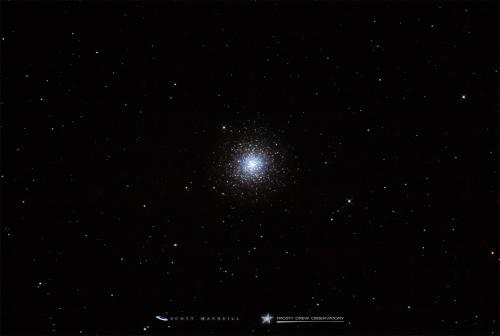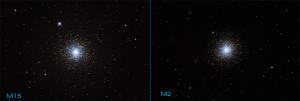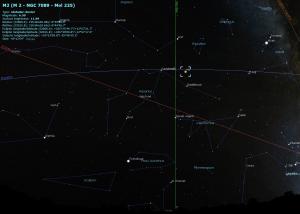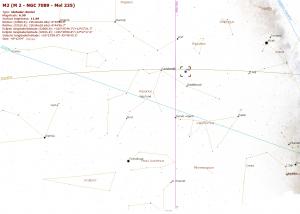Messier 2 – Globular Cluster in Aquarius
October can be a depressing month for the globular cluster aficionado. Sagittarius, Scorpius, and Ophiuchus and their treasure trove of globular clusters have ridden off to the west, leaving us with the barren-looking skies of autumn.
But all is not lost! Pegasus is home to the wonderful globular M15, and Aquarius sports a pair of globs, M2 and M72. The former is our “Object of the Month” and a worthy rival to M15.
M2 was discovered by French astronomer Jean-Dominique Miraldi in 1746, and catalogued by Messier 14 years later. At magnitude 6.5, M2 is barely visible to the unaided eye from dark-sky locations. You can find it with binoculars or finderscopes by searching the area 5 degrees north of beta (β) Aquarii and looking for what appears to be an out-of-focus star. Viewed with small-aperture scopes and magnifications between 60-120X, M2 is an unresolved, condensed circular haze some 5 or 6 arcminutes in diameter. Larger scopes and magnifications in excess of 150X expand the overall dimensions to 8-12 arcminutes and reveal stars in the outer regions.
Recently, I compared M2 and M15 with my 13.1-inch Dob and an 18-inch Dob owned by fellow ATMoB member Steve Clougherty. Both globulars appeared similar in size; their outer regions nicely resolved by the two scopes. M15 seemed more concentrated toward the middle – a surprise to me, as some observing guides describe M2 as having an almost stellar-looking center. I didn’t see it; neither did Clougherty. What’s your opinion?
M2 lies about 37,000 light years away. It’s one of the richer and larger globular clusters - an estimated 100,000 stars fill an area 175 light years across. At a calculated age of 13 billion years, M2 is also one of the oldest globular clusters in the Milky Way.
- Author:
- Glenn Chaple
- Entry Date:
- Oct 6, 2015
- Published Under:
- Glenn Chaple's Columns





